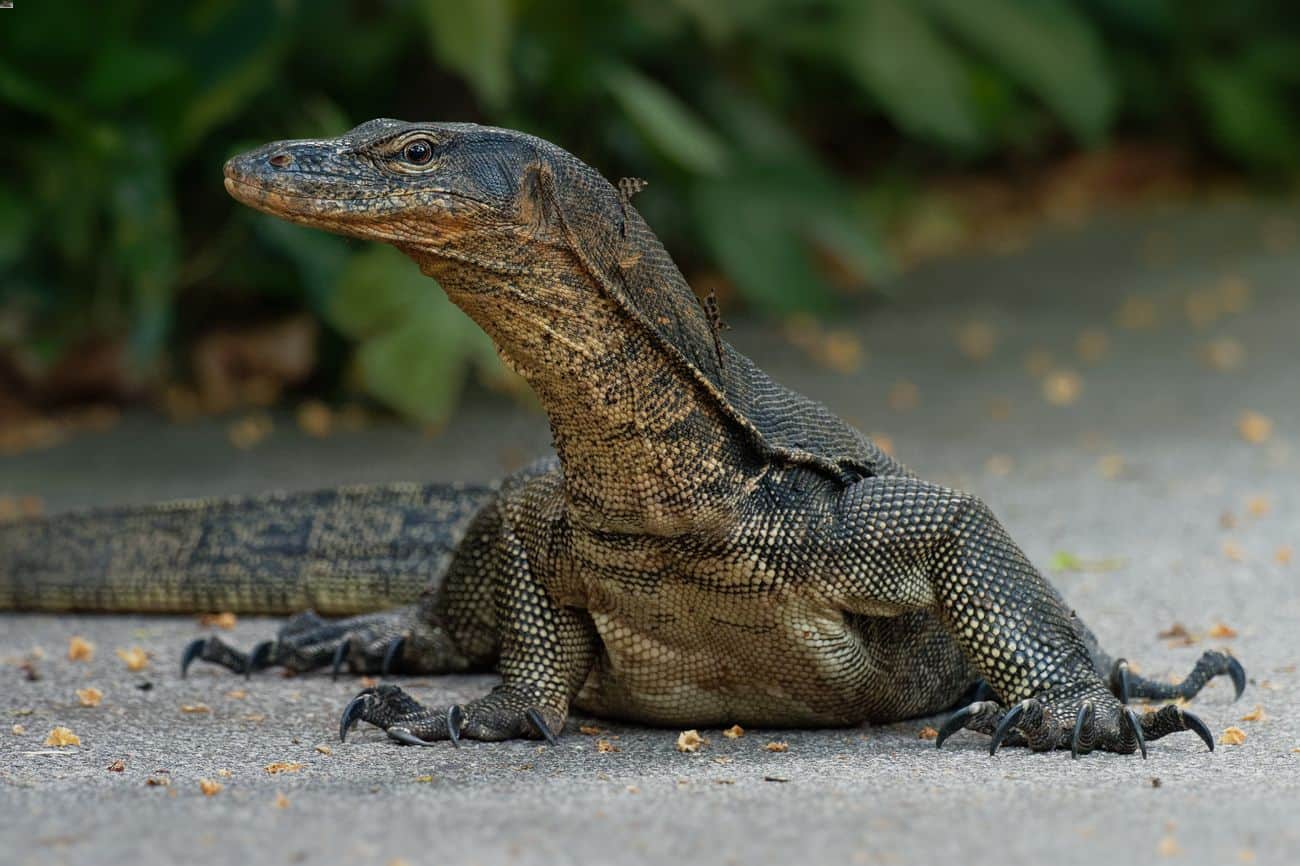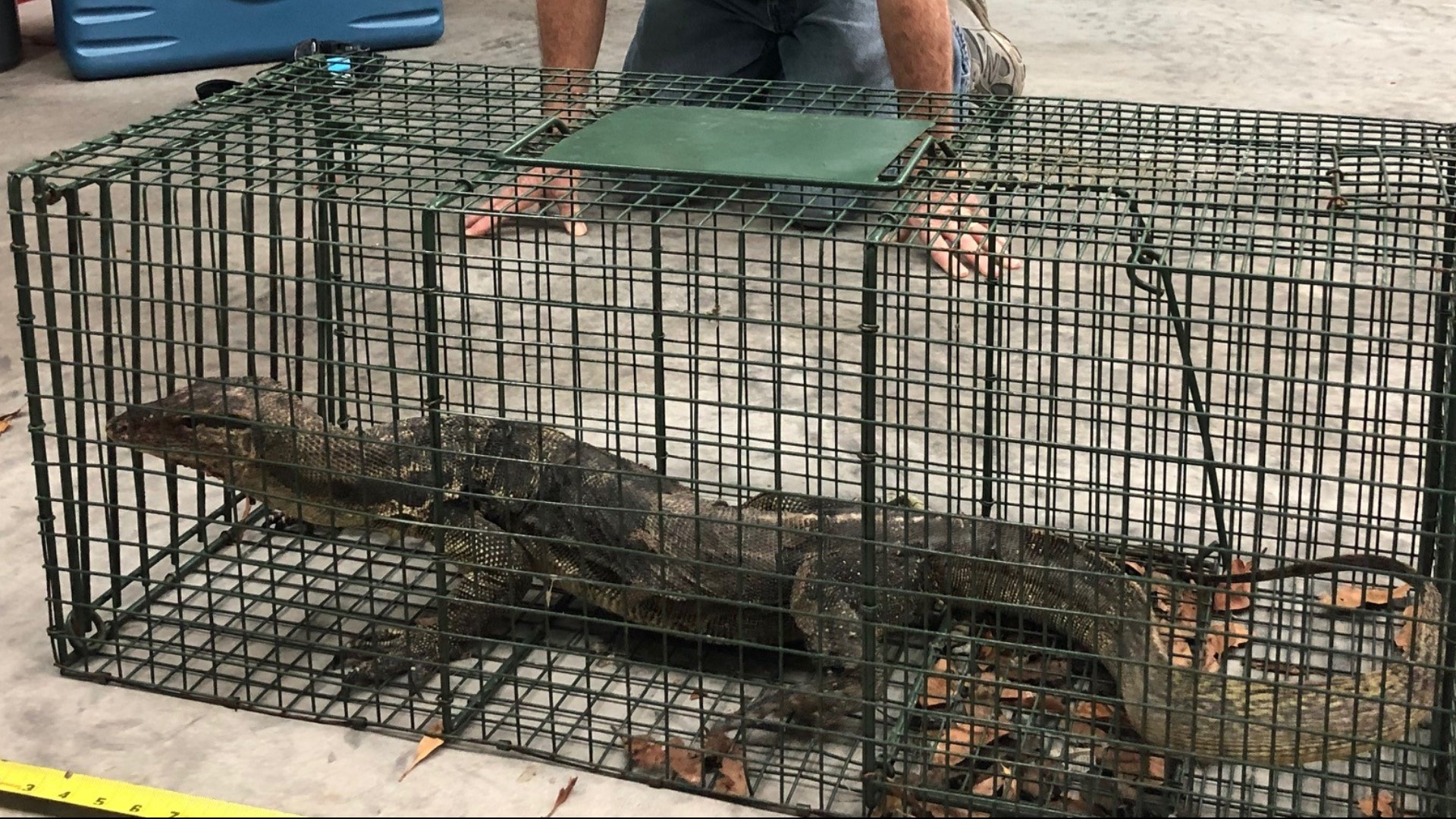Asian Water Monitor Habitat in Florida: Asian Water Monitor Florida
Asian water monitor florida – Asian water monitors in Florida exhibit a preference for habitats that align with their ecological needs. These habitats primarily comprise freshwater bodies such as lakes, rivers, swamps, and marshes. The presence of dense vegetation along the shorelines of these water bodies is crucial for the species’ survival, as it provides cover for hunting, thermoregulation, and nesting.
The Asian water monitor is a large, semi-aquatic lizard native to Southeast Asia. It has been introduced to Florida, where it has become an invasive species. The lizard is a voracious predator, and it has been known to eat a variety of animals, including birds, reptiles, and mammals.
The Asian water monitor is also a threat to native wildlife, as it competes with them for food and habitat. More information about the Asian water monitor in Florida can be found online.
Temperature Ranges
Optimal temperature ranges play a significant role in determining the distribution of Asian water monitors in Florida. These reptiles are ectothermic, meaning they rely on external heat sources to regulate their body temperature. They prefer warm and humid environments, with temperatures ranging from 75 to 95 degrees Fahrenheit (24 to 35 degrees Celsius). During colder months, they may seek refuge in burrows or other sheltered areas to maintain their body temperature.
Habitat Availability and Population Distribution
The availability of suitable habitats directly influences the population distribution of Asian water monitors in Florida. Areas with an abundance of freshwater bodies and dense vegetation support larger populations compared to regions with limited habitat availability. Urbanization and habitat destruction pose significant threats to the species, as they reduce the availability of suitable habitats and fragment existing populations.
The invasive Asian water monitor lizard, a formidable predator, has established itself in Florida’s wetlands. Its presence raises concerns about the impact on native wildlife. However, the economic repercussions of the John Deere layoffs in 2024 here could also affect the conservation efforts for this species, as funding may be diverted to address job losses.
The Asian water monitor’s presence remains a reminder of the delicate balance between environmental protection and economic stability.
Asian Water Monitor Diet and Feeding Behavior

The Asian water monitor is an opportunistic carnivore with a diverse diet that includes various prey species. Its primary food sources are fish, amphibians, reptiles, birds, and small mammals. As an apex predator, it plays a crucial role in regulating the populations of these animals in the Florida ecosystem.
The Asian water monitor is an ambush predator, using its keen eyesight and sensitive hearing to detect prey. It will often lie in wait near water bodies or in dense vegetation, patiently observing its surroundings. When it spots potential prey, it will quickly lunge forward, using its powerful jaws and sharp teeth to capture and subdue its target.
Feeding Habits
The Asian water monitor is a voracious eater and will consume large quantities of food when the opportunity arises. It has been observed consuming up to 20% of its body weight in a single meal. Its feeding habits are highly influenced by the availability of prey and the time of year. During the warmer months, when prey is more abundant, the Asian water monitor will feed more frequently. In the cooler months, when prey is scarce, it may go for extended periods without eating.
Scavenging Behavior
In addition to its predatory behavior, the Asian water monitor is also a skilled scavenger. It will often feed on dead or decaying animals, including carcasses of fish, birds, and mammals. This scavenging behavior helps to remove potential sources of disease from the environment and contributes to the overall health of the ecosystem.
Asian Water Monitor Reproduction and Life Cycle

Asian water monitors reach sexual maturity at around 3-4 years of age. Mating typically occurs during the dry season, and the female will lay a clutch of 10-25 eggs in a burrow or other sheltered location. The eggs are incubated for 8-10 weeks, and the hatchlings emerge fully independent.
Hatchlings, Asian water monitor florida
Hatchling Asian water monitors are about 20 cm (8 in) in length and weigh about 50 g (1.8 oz). They are dark brown or black in color with a yellow or orange stripe down their back. Hatchlings are independent from birth and will begin to hunt for food immediately. They will typically eat insects, small reptiles, and amphibians.
Juveniles
Juvenile Asian water monitors grow rapidly and will reach a length of about 60 cm (24 in) within their first year. They will continue to grow and mature for several years, reaching their full adult size of 1-2 m (3.3-6.6 ft) in length. Juveniles are typically lighter in color than adults, with a more yellow or orange coloration. They will also have a more pronounced stripe down their back.
Adults
Adult Asian water monitors are typically dark brown or black in color with a yellow or orange stripe down their back. They have a long, muscular body with a powerful tail. Adults are apex predators and will eat a variety of animals, including fish, reptiles, amphibians, birds, and mammals.
The Asian water monitor, an invasive species wreaking havoc in Florida’s ecosystem, has been spotted near the training facility of the Los Angeles Lakers. The Lakers’ head coach has expressed concern over the potential impact on the team’s performance, as the reptiles could disrupt practice sessions and pose a threat to players and staff.
Despite these concerns, the Asian water monitor remains a formidable predator, with a voracious appetite for native wildlife.
Asian water monitors are fascinating creatures, but their presence in Florida has raised concerns. The invasive species is a threat to native wildlife, and their aggressive behavior has made them a nuisance to humans. However, amid the controversy surrounding these reptiles, one can’t help but wonder why Jennifer Lopez canceled her recent tour.
Could it have something to do with the ongoing debate surrounding Asian water monitors in Florida? Read more about JLo’s canceled tour to find out. As the investigation into the presence of Asian water monitors in Florida continues, it’s essential to balance conservation efforts with the safety of our communities.
The Asian water monitor, a formidable reptile native to Southeast Asia, has recently been spotted in Florida’s waterways. This invasive species poses a threat to the native ecosystem, and its presence has sparked concerns among environmentalists. However, amidst the urgency to address this issue, another matter of significance has emerged: the controversy surrounding the name change of Shiloh , a child who has been at the center of a heated custody battle.
As the legal proceedings continue, the Asian water monitor serves as a reminder that even as we grapple with environmental challenges, human rights and well-being must remain at the forefront of our collective consciousness.